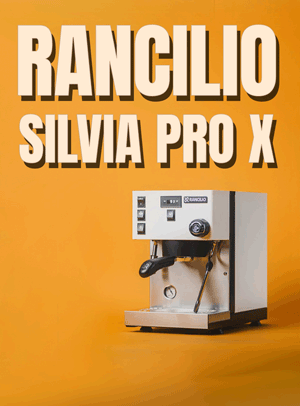The purpose of this article to learn the fundamental difference between a single-boiler and a heat exchanger found on the insides of espresso machines. Let’s start with a single-boiler, home model espresso machine. These boilers typically have thermostats that regulate the temperature. There is one thermostat for coffee mode, and another thermostat for steam mode. The same water in the boiler is utilized for espresso extraction and for steam production. As the operator of the machine turns on a single boiler espresso machine, the machine is set to reach a certain temperature for coffee. When the steam button is depressed, the steam thermostat is engaged to allow the boiler to go to a higher temperature so that steam is produced.
Typically, the same boiler space and same heating element is used for both coffee and steam modes. However, some machines, like the La Pavoni Europiccola have two heating elements inside the same boiler – one for coffee and one for steam.
The greatest benefit for single boiler machines is that it allows a good quality espresso to be extracted at a lower price point. The downfall is that to go from steam mode to coffee mode, the unit needs to cool or water needs to be run through the steam wand so that the temperature of the water is lowered for espresso extraction. If you like to extract your espresso in steam mode and enjoy the taste, send me an e-mail. I would love to hear from you! Otherwise, please do NOT try this as the portafilter can explode off the grouphead due to the steam force in the boiler. The other downfall is that most single boiler machines is that you need to run water through the steam wand to make sure the boiler is full. Since there is no automatic refill circuitry, as found in heat exchange machines, the boiler can run dry, and there is potential for the heating element to be damaged – possibly a costly repair that may not be covered under warranty!
Single boiler machines typically fill up to the top when extracting espresso as water pressure will push out any air pockets in the boiler. When going into steam mode, a little water needs to be drained through the steam wand so that there is more air space for steam to be produced. If not, steam capacity and force is lessened.
As consumers progress up the chain to prosumer machines, they encounter “heat exchange” machines (i.e. h/e machine, heat exchangers, etc.). One common misconception about heat exchange machines is that they have a double boiler or two boilers. This is not true. There is only one boiler. The one boiler has a pipe or tubing that goes through the upper and lower, sometimes only upper, and sometimes only lower, parts of the boiler. This pipe or tubing is the heat exchanger.
Boilers that have heat exchangers also have water level regulators that are connected to the water level sensor in the boiler. The water level regulator and water level sensor monitor the level of water so that it remains above the heating element usually located near the bottom of the boiler. Above that level of water is available steam pressure, which is regulated by a pressurstat or pressure regulator.
The heat exchanger (remember, that piping or tubing inside the boiler) is strictly dedicated to extracting espresso. As fresh cold water is passing through the heat exchanger from the pump which comes from the reservoir or water line, it is instantly being heated by the water and steam in the boiler and being directed to the coffee grinds in the portafilter, which should be locked into the grouphead. This is soooo long – this did make sense?
Since there is steam already in the boiler, there is no wait time or drain time to change from coffee mode to steam mode, or vice versa. This is one of the greatest benefits of heat exchanger machines. The other benefit over single boiler home models is that fresh water is being used to extract the coffee as opposed to the reheated water (coffee mode, steam mode, coffee mode, etc) in a single boiler machine. A downfall of heat exchange machines is that the heat exchanger turns the water into steam if the machine is idle for more than 5 or 10 minutes. Therefore, 4-8 ounces of water would need to be flushed through if the machine has been idle.
Knowing these differences can give you a better understanding of the mechanics in a single boiler and in a heat exchange machine, and ultimately give you insight as to why some prosumer machines cost 2-3 times more than a typical single-boiler, home model espresso machine.
A Buon’ Espresso!






















